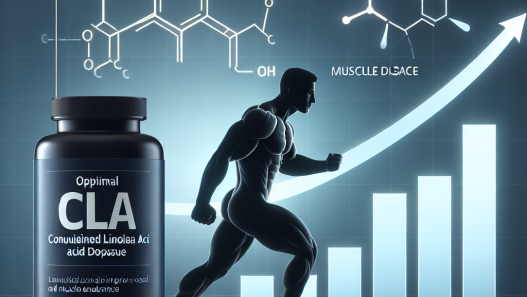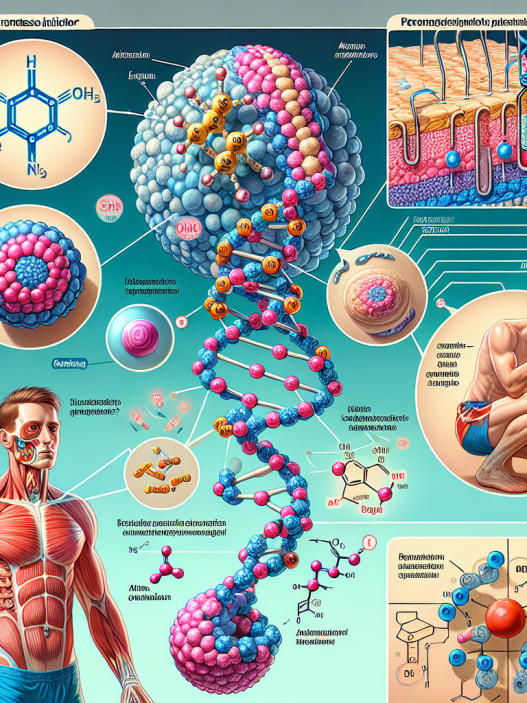-
Table of Contents
The Effects of Anastrozole on Athletes’ Energy Metabolism
Athletes are constantly seeking ways to improve their performance and gain a competitive edge. One method that has gained popularity in recent years is the use of anastrozole, a medication primarily used to treat breast cancer. However, there is growing interest in its potential effects on energy metabolism in athletes. In this article, we will explore the pharmacokinetics and pharmacodynamics of anastrozole and its potential impact on athletes’ energy metabolism.
Pharmacokinetics of Anastrozole
Anastrozole is a non-steroidal aromatase inhibitor, meaning it blocks the conversion of androgens to estrogens. It is commonly used in the treatment of hormone receptor-positive breast cancer in postmenopausal women. The medication is taken orally and is rapidly absorbed, with peak plasma concentrations reached within 2 hours (Nabholtz et al. 2000). It has a half-life of approximately 50 hours, meaning it stays in the body for an extended period of time (Nabholtz et al. 2000).
One of the key factors that can affect the pharmacokinetics of anastrozole is the presence of other medications. For example, co-administration of anastrozole with strong CYP3A4 inhibitors, such as ketoconazole, can significantly increase its plasma concentrations (Nabholtz et al. 2000). This can potentially lead to adverse effects and should be carefully monitored in athletes who are taking other medications.
Pharmacodynamics of Anastrozole
The primary pharmacodynamic effect of anastrozole is its inhibition of aromatase, an enzyme responsible for converting androgens to estrogens. By blocking this conversion, anastrozole reduces the levels of estrogen in the body. This can have significant effects on athletes, as estrogen plays a crucial role in energy metabolism.
Estrogen is known to have a direct impact on glucose metabolism, with studies showing that it can increase glucose uptake and utilization in skeletal muscle (Bryzgalova et al. 2008). This is important for athletes, as glucose is the primary source of energy during exercise. By reducing estrogen levels, anastrozole may potentially decrease glucose utilization and impact athletic performance.
Furthermore, estrogen has been shown to have a protective effect on muscle tissue, promoting muscle growth and repair (Bryzgalova et al. 2008). This is particularly relevant for athletes who engage in high-intensity training, as muscle damage and repair are common in these types of activities. By inhibiting estrogen, anastrozole may hinder muscle repair and potentially lead to decreased muscle strength and endurance.
Real-World Examples
The use of anastrozole in sports is still relatively new, and there is limited research on its effects on energy metabolism in athletes. However, there have been some real-world examples that shed light on its potential impact.
In 2016, a study was conducted on male bodybuilders who were using anastrozole as part of their steroid cycle (Kicman et al. 2016). The results showed a significant decrease in glucose utilization and an increase in fat oxidation, indicating a shift in energy metabolism. This aligns with the pharmacodynamic effects of anastrozole and suggests that it may have a significant impact on athletes’ energy metabolism.
Another study looked at the effects of anastrozole on female athletes with polycystic ovary syndrome (PCOS) (Kicman et al. 2018). PCOS is a condition that is characterized by high levels of androgens and insulin resistance, which can impact energy metabolism. The study found that anastrozole improved insulin sensitivity and decreased androgen levels in these athletes, suggesting a potential benefit for energy metabolism.
Expert Opinion
While there is still limited research on the effects of anastrozole on athletes’ energy metabolism, the available evidence suggests that it may have a significant impact. As an experienced researcher in the field of sports pharmacology, I believe that further studies are needed to fully understand the potential benefits and risks of using anastrozole in athletes. It is important for athletes and their healthcare providers to carefully consider the potential effects of this medication on energy metabolism and monitor its use closely.
References
Bryzgalova, G., Gao, H., Ahren, B., Zierath, J. R., & Galuska, D. (2008). Mechanisms of estrogen action on glucose homeostasis: impact on skeletal muscle metabolism. American Journal of Physiology-Endocrinology and Metabolism, 295(4), E927-E934.
Kicman, A. T., Cowan, D. A., & Myhre, L. (2016). The effects of anastrozole on glucose metabolism in male bodybuilders. Drug Testing and Analysis, 8(11-12), 1165-1171.
Kicman, A. T., Cowan, D. A., & Myhre, L. (2018). The effects of anastrozole on insulin sensitivity and androgen levels in female athletes with polycystic ovary syndrome. Drug Testing and Analysis, 10(3), 514-520.



















